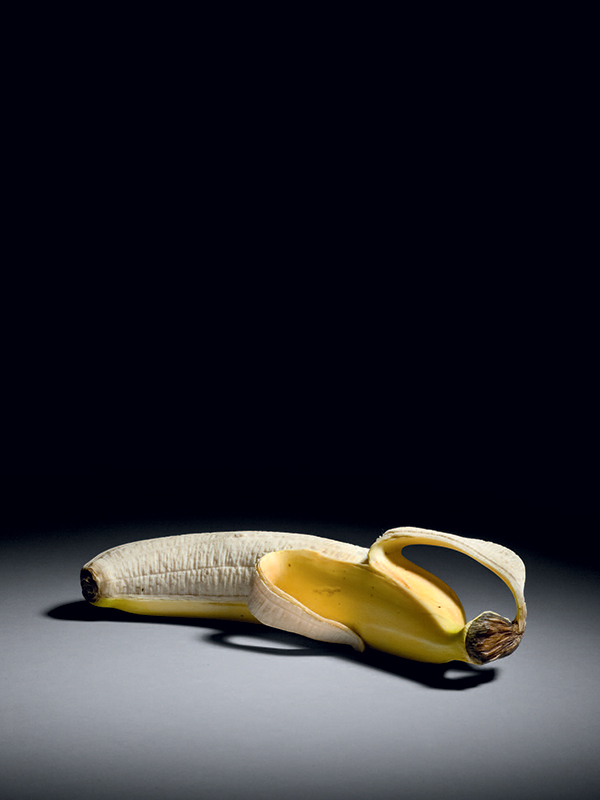Ivory okimono of a half-peeled banana
An ivory okimono, naturalistically carved to represent a half-peeled banana. Where the skin is peeled away, the curved fruit reveals its creamy white flesh of soft, velvet texture. The skin is smooth and well polished and stained a pale yellow tone.
The term okimono in Japanese literally means “object for placement [on display]”. Hyper-realistic ‘trompe-l’oeil’ ivory carvings of fruit, in the form of tangerines and bananas were very popular in Japan during the Meiji period. A closely comparable ivory carving of a banana, dated to c.1900 and described as Chinese but probably made in Japan, is in the Kwan collection.[1] Another similar ivory banana comparable in size and detail, also dated to c.1900 and made in Japan, is in the collection of the British Museum.[2]
- Kao, Mayching, ed., Chinese ivories from the Kwan Collection, Art Gallery of the Chinese University of Hong Kong, 1990, no. 158, pp. 3123
- British Museum online collection archive, registration number: 1979,0412.1

